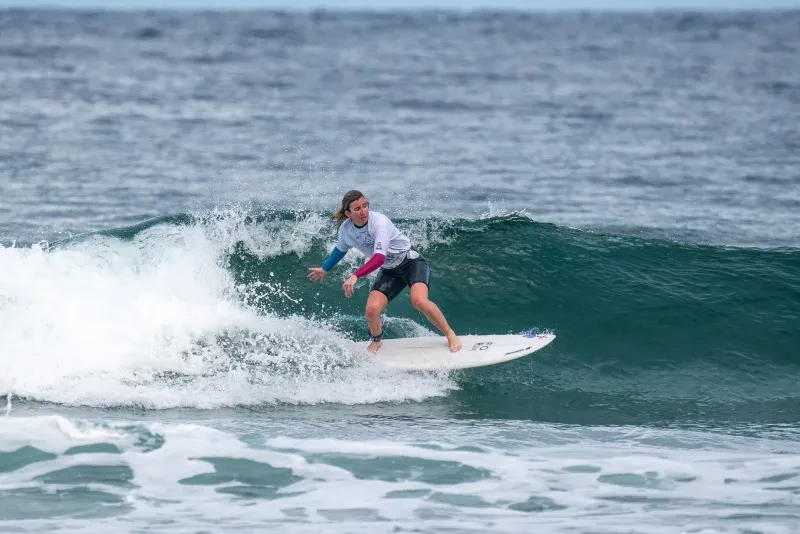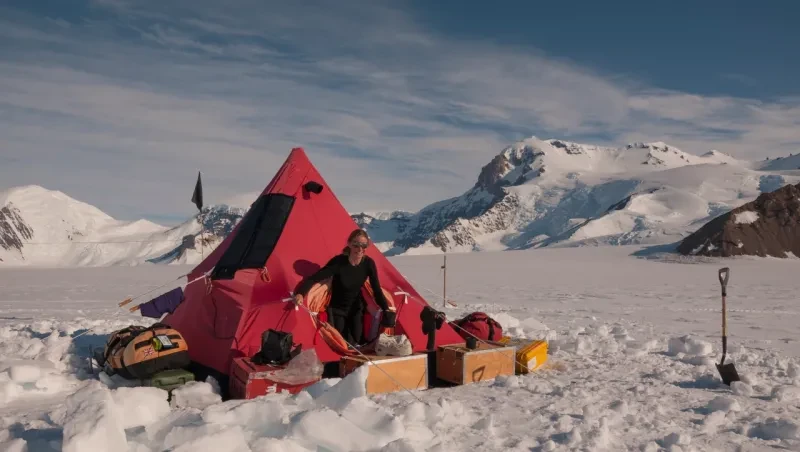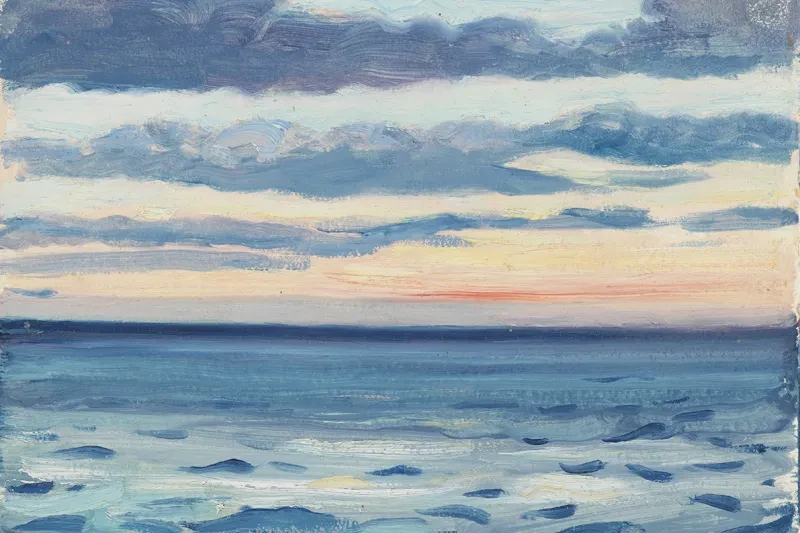
The word ‘sailing’ today is a misnomer. Instead of relying solely on wind, sail, rope and skill, there is often another power at play: an engine.
Using a motor is often seen as a necessary part of modern sailing – but what happens if there is no motor? How does the experience change if you shut off or get rid of that combustible companion?
Sailor Rose Ravetz is the owner of the Defiance, a 23ft engineless boat that she restored herself. When Rose invited her brother, filmmaker Huw Wahl, on a trip along the River Orwell, it kickstarted a conversation about what it really means to travel by water.
The result is Wind, Tide & Oar, a film that explores engineless sailing and the lives of people who live, work and voyage without auxiliary power.
“Engineless sailing is a unique perspective through which we can understand our place in the world,” Rose says, “offering us a sense of being part of the world, rather than above and beyond it.”
Rose and Huw spoke to Cutty Sark curator Hannah Stockton about the making of the film, and what they’ve each learned while moving through water without motor.
Hannah Stockton: What was the initial inspiration for Wind, Tide & Oar?
Huw Wahl: The inspiration initially stemmed from the first real experience I had of sailing. This was on my sister Rose's boat Defiance, a 22ft gaff-rigged cutter.
For almost a year Rose lived aboard on a mooring buoy on the River Orwell, in challenging conditions. She had a wood stove to heat the tiny space, no plumbed-in toilet facilities to speak of, and had to row a tender sometimes half an hour against the tide just to get ashore.
It all seemed like an adventure when I visited, and even trudging through the mud to get to the tender where she picked me up was something new and exciting. The whole thing felt like a transgression from 'normal' life, as if I was discovering a borderland untouched by the rules and regulations most of us have to live by.
That week, we explored the River Orwell and the Stour, landing on beaches to make fires, cooking and talking, or simply just being silent for long periods of time.
Moving through water using only the wind for propulsion felt incredibly freeing. I noticed that the rhythms of sailing seemed to change as much as our moods, and there was a calm and peace that interested me as much as the frenetic activity. Time on board was very different to being on land; it was compelling.
When I saw Rose work the boat, moving it with the elements, I became convinced there was something more than just sailing occurring. It was a connection to something much bigger. This interaction between sailor and vessel ignited my curiosity. I wanted to experience more of it, and to work out what it was that I was sensing, both in the sailor, and in myself.
HS: Why did you want to make a film specifically about engineless sailing?
HW: A few things fed into the film being pinned on the idea of sailing without an engine.
Firstly, during our week on the water, it became apparent Rose’s engine had some issues, and we kept having to do manoeuvres you might usually do with the engine under sail alone. This was a fascinating thing to see, bringing up questions of traditional seafaring skills lost to the march of ‘progress’, and sparked discussions about why you might try to do it more.
Secondly, Rose introduced me to a sailor called Stevie Hunt, who had just spent seven years restoring his 42ft yacht and, in the process, had permanently removed the engine. He inspired Rose to use her engine less and eventually remove it altogether. Visiting him in Ipswich boatyard and seeing the launch of his boat, which he then rowed around the harbour, was very inspiring.
Feeding into all of this was a developing understanding of my own filmmaking, especially its analogue processes, which had started to mesh with Rose's experience of sailing. Shared themes kept springing up, like presence, timing, ecology, awareness, and scarcity, which I wanted to continue exploring together. All of these elements coalesced into the idea of the film. It was the obvious route to spending more time on water.
HS: What can viewers expect from the film?
Rose Ravetz: Wind, Tide & Oar is no average film; audiences are invited into the sensory, visceral experience of living a life on the water. It is a very immersive experience. The film is spacious and meditative, allowing the viewers to sink into the natural rhythms of wind and tide. Through encounters with characterful sailors and each of their beautiful, engineless boats, the film explores the traditional art of working with the elements to manoeuvre a vessel through water.
Unlike the frantic buzz of the information age we live in, Wind, Tide & Oar offers a quiet reflection on the world, and on what it is to be human. Its messages are subtle, resonating under the surface, much like sound travels through water; the film washes over the viewer, a reminder of another way of being.
HS: Can you tell us about some of the people featured in Wind, Tide & Oar?
RR: The sailors and boats in Wind, Tide & Oar are diverse; they all sail engineless for different reasons and use their boats different purposes.
Stevie Hunt lives on his boat Birubi. After sailing her for several years with an unused engine, he removed it. For Stevie, sailing engineless is part of who he is: the challenge, the learning involved, the skill required and the skills it develops are essential to Stevie’s way of life.
Thames sailing barge Blue Mermaid runs residential trips for young people and vulnerable adults, using sailing to strengthen relationships and develop essential life skills.
The film also features various sailors and vessels in the sail-cargo industry, transporting goods across oceans under sail. Tres Hombres, operated by the sail-cargo company Fairtransport, transports speciality goods between the Caribbean and Europe and Jorne Langelaan, the founder and CEO of EcoClipper, also plans to build large engineless ships to transport goods worldwide.
HS: Can you tell me about your process in making the film?
HW: Most of the film is shot using a hand-wound Bolex 16mm camera from 1967. I also occasionally used a Canon Scoopic 16mm camera and a waterproof Super 8 camera – the latter was especially handy when it was raining!
One scene is shot on an Aaton XTR, which takes longer reels, but for everything else, the cameras only took reels that lasted two and a half minutes. When shooting time was up, I had to change the film, either in a changing bag or in dimmed light. Additionally, with the Bolex camera I had to rewind after every 25 seconds of filming. Not unlike the engineless sailor, who must plan everything very carefully, the discipline of using this kind of equipment is one of preparation and concentration.
For example, when I set out for a two-week trip sailing to France on Guide Me, I had to guess what I might be shooting, work out how many reels I could take, and then try to retain an idea of what I’d already filmed throughout the whole shoot. When I pressed the shutter, I needed to be certain that the shot was worth taking.
Shooting in this way certainly helps attune me to the environment. The more I’m in the rhythm of what is happening in front of me, the more likely it works, and the rhythms are carried through in the film. When I hold the shutter button down and hear the expensive film shooting through the camera, I certainly gain a heightened awareness, and what I'd call a 'scarcity anxiety'. This can be quite useful in forcing me to hone in. It can also be incredibly difficult, and mean you miss some key moments.
However, when filming in digital – where I feel that I have an 'endless' ability to capture footage – I become more anxious. I've found this is not unlike some engineless sailors, who feel more anxious with an engine than without.
This technical process combines with the other process of filmmaking, which for me is all about the relationships you build with the people you are filming and the subject you are engaged in. My aim is often to try and get back to the original feeling of inspiration through the filmmaking process. Being embedded in a world like sailing – surrounding yourself with the atmosphere, the ideas, the people and the experience of it – allows things to develop that you didn't expect.
HS: What were your biggest challenges while filming?
HW: I always had an anxiety that I hadn’t captured footage that would really allow me to convey what engineless sailing was. Whenever I would become frustrated or anxious about this, Rose would often suggest that I needed to 'know what to push, and what not to push'.
Rose’s wisdom came from her own experience as an engineless sailor, where there are distinct limits to one’s ability to control situations: this was the challenging lesson that we both had to slowly learn.
In terms of physical challenges one of the most difficult sails was the sequence that opens the film.
We were going around the Lizard in Cornwall on board Guide Me, and it was the first time I had experienced real seasickness. Without going into too many gruesome details, each time I went down below deck to change a film in the changing bag, I had to rush back up once it was done to be sick! This happened multiple times until I was entirely exhausted. The 16mm camera also jammed, but, luckily, I had brought a Super 8 camera as back-up. Still, there was a period in the middle of that sail where I was just too unwell to film. Amazing scenes were going on all around me, and all I could do was wait for the next bout of sickness to climax.
A huge highlight in production was the Engineless Sailing Jolly, which Rose organised alongside other sailors in the film. It was a real community event, which later won the 'Best Contribution to East Coast Sailing' award from the Colne Smack Preservation Society. I loved how uncompetitive it was, and how celebratory it became.
RR: After every shoot, Huw would send off the 16mm reels to Kodak to be developed. He would then receive the footage in digital form and would send me what were called the ‘rushes’ – raw, unedited silent footage. Watching the rushes was a recurring highlight of the production for me. The footage shot by Huw was always so incredibly mesmerising, capturing the essence of what life at sea was like.
HS: Can you tell me about the Wind, Tide & Oar book?
RR: The book arose from meeting the publisher and author Elte Rauch of The New Menard Press. Elte was inspired to bring her literary knowledge to the table to pursue these ideas further in the written word. Thus, the idea of an accompanying book was seeded. The book really stands on its own however as a beautiful and fascinating anthology. It features the voices of a diverse array of sailors and people intimately connected to the sea, including various characters from the film – and Huw as well.
While the heart of the book is the concept of engineless sailing, the narratives explore broader topics too, making it a compelling read for anyone interested in the sea, ecology, mental health and more.
We launched the book alongside the film at Royal Museums Greenwich, and it has received a very positive response so far. It's available to buy in the Cutty Sark shop and online.
HS: How has Wind, Tide & Oar been received so far?
RR: After its debut at Royal Museums Greenwich, the film has been touring the south-east coast on Blue Mermaid, powered entirely by wind and tide. I’ve travelled to meet the barge in each port, introducing the film and answering questions after each screening. I’ve therefore had the privilege of engaging with all the audiences of the film so far!
It has been wonderful to witness the audience’s responses to the film. Viewers have described the film as being an 'extraordinary experience' and one that inspires a feeling of 'calm' and 'connection'.
It resonates with sailors and non-sailors alike: I have heard many people are inspired either to sail more without using their engines, or to start sailing having never done so before!
People have been very intrigued about the future of engineless sailing and how it might play a part in a sustainable global economy. For some, it offers an exploration of another way of being in the world. The film has also received some wonderful comments both from well-known critics and sailors, and we hope this trend will continue as the audience broadens and more people get to see it.
HS: What do you hope viewers take away from the film?
HW: I’d like what I experienced in those first days sailing on Defiance – the connection and the space, the rhythms, the sense of belonging – to come across in the film. If the intellectual and conceptual things that occurred in my head and the sensorial and tactile experiences that happened in my body somehow combine in the moving image, perhaps the audience can also partake in that 'opening' of the world.
RR: For me, the film is a quiet but powerful reflection on our human connection to the natural world. I’d like for audiences to contemplate what it means to be in conversation with nature: to work with natural forces rather than attempting to dominate or power over them.
In my view, engineless sailing is a unique perspective through which we can understand our place in the world; offering us a sense of being part of the world rather than above and beyond it.
Having said that, there are so many different take-aways from this film, and I couldn’t possibly name them all. Each viewer will have their unique perspective, and this is the wonderful thing about such a spacious, open work of art.
HS: What are your future plans for Wind, Tide & Oar?
RR: After such a successful premiere at Royal Museums Greenwich, the bar has been set high for Wind, Tide & Oar’s future!
Following the premiere, the Thames sailing barge Blue Mermaid set off on the film’s tour around the south-east coast of the UK. Supported by the Lottery Heritage Fund and operated by Sea-Change Sailing Trust, youth trainees are sailing the barge between ports, with screenings of the film taking place in each destination.
She is now more than halfway through the tour, has visited six ports and offered at least two screenings in each, with over 500 people coming aboard to see the film. The barge also boasts a fascinating exhibit on Thames barge heritage, which is open to the public in each location she visits. Tickets are free and can be booked on our website. An exclusive snapshot of the film is also available to view on Cutty Sark for the duration of the tour.
Find tour tickets and check future screening dates on the Wind, Tide & Oar website.


















